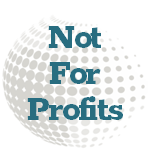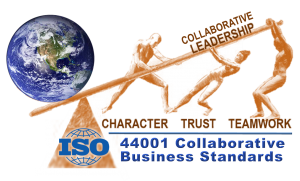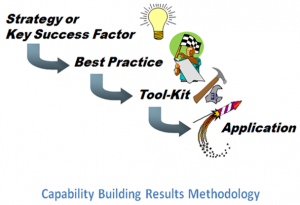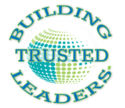Why a Leadership Initiative for Not for Profit and Government Organizations?
Municipalities, Universities, Schools, Healthcare and Social Service Deliverers must find new and better ways to improve productivity, respond more effectively, innovate, and reduce waste.
The purpose of government is “public service,” and for non-profits it’s “community service.”

Because the Public and Not-For-Profit (NFP) sectors are not faced with competition in the same sense as are their business counterparts, they must engage in continuous improvement, else they become bureaucratically burdened.
Goal Achievement:
Empower Leaders to build extraordinary organizations capable of best-in-class goal achievement
Integrated Service Delivery:
Build capabilities to link organizations together for seamless/integrated service delivery
Continuous Innovation:
Engage in continuous improvement, lean management, and rapid adaptation

We have been actively engaged over the last three decades in developing Collaborative Best Practice Standards of Excellence for organizations. The International Standards Organization (ISO) has just adopted world class Collaborative Business Relationship Management standards for use both inside and between organizations. We were highly influential designing and testing these practices. (see ISO 44001 Collaborative Standards — overview)

We invite anyone interested in this initiative to join forces and help build a better future for America and fulfill the promise of our democratic institutions.
To be highly effective in service delivery, NFP/Gov’t Leaders must be proficient in several key areas, for which we have 1 and 2 day program offerings, including:
- Trusted to Lead – How to create a powerful, collaborative, trust-based organization
- Building a Team You Can Trust – How to create & sustain high performance innovation teams
- Becoming a Great Collaborative Champion – Critical mindsets & skillsets to lead new initiatives
- Alliance Best Practices – How to structure, launch, lead & sustain strategic relationships
- Collaborative Innovation & Lean Management – How to design & launch successful innovation
- TransAlignment Negotiations – How to mediate & negotiate across organizational boundaries
- Building a Powerful Value Proposition – Transforming vision & mission into strategy & value delivery
- Strategic Execution – Ensuring that Strategic Plans are brought from vision to powerful results
- Metrics & Health Diagnostics – Driving results with metrics & tracking collaborative health
- Designing a Collaborative Board of Directors* – Building an active & productive Board of Directors
- Finance for Future Sustainability* – Developing sound financial management & long-term viability
- Collaborative Marketing* – Linking partners into a joint marketing & public relations campaigns
- Impact Investing* – Driving social value by allocating assets that generate positive social impact
- Managing, Motivating, & Mobilizing Volunteers* – Designing, leading & implementing a program
* for Not-for-Profits only
We design all our programs with the end result in mind: You want practical applications– fast. Executives rate all programs far more highly if three things are present:
- Program is practical and directly applicable to my situation
- I can use the learnings & material immediately
- Leader was knowledgeable, experienced, and responsive

- The Concept is clear
- A Best Practice has been illustrated to bring the concept into a realistic framework
- A set of “Tools” (such as a checklist, process map, etc) makes the best practice useable in everyday practice.
- During the program, whenever possible, participants are requested to apply the concept, best practice, and tool kit to a real-life situation in order they gain immediate applicability (and consequently the longest term retention)
Instead of using case studies that may not be highly applicable to the adult leader, we organize our capability building sessions to focus real issues, problems, and opportunities the participants bring into the session.
Virtually every authority on teamwork explains how important trust is in producing great results.
Trust’s been the Fuzzy Backwater
The academic experts and seasoned practitioners all agree trust is essential to success, but then elaborate with overly simplistic words of advice that are misleading at best.
You’ve heard it before: “Trust but verify.” “Trust must be earned.” “Build an escape clause.” “Speak softly but carry a big stick.” “Be ever vigilant.” “Don’t trust, just be sure you have a great lawyer and a tight contract,” all platitudes virtually useless in creating sustainable trust. And often the advice is contradictory, irrelevant, inapplicable, or downright inappropriate, irritating, and counter-productive.
Trust has remained so “fuzzy,” it has been largely an elusive phenomenon, too “to soft” to be taught in business schools or leadership courses.
Great Trust Advantage:
Our analysis based on over 5000 analyses show that an organization that enables high levels of trust will have at least a 25% competitive advantage over those with low trust.
The Economics of Trust:
High trust has massive economic impact, because it dramatically lowers non-value added work, enables high levels of speed, integration, and productivity. But most importantly, high trust costs almost nothing, therefore the return on investment is massive.
Our Breakthrough Approach
We have changed all that. Our “Architecture of Trust” is based on hard science, economic analysis, and careful “best practice” codification enables us to make trust a very manageable, replicable, and sustainable function that can be taught, operationized, and diagnosed if it wanes.
It is the most well-intentioned segment of our culture.
But good intentions don’t ensure good results or the effective use of money.
Many donors are concerned that there is too little transparency, poor accountability, loose management, and virtually no incentive to improve or to collaborate with other organizations to leverage resources and create synergies.
In the Private Sector, Competition is the Force that causes the Best to Thrive, while weeding out the mediocre.
World Class Business Standards are for the Not-For-Profit Sector what Competition is for the Private Sector.
